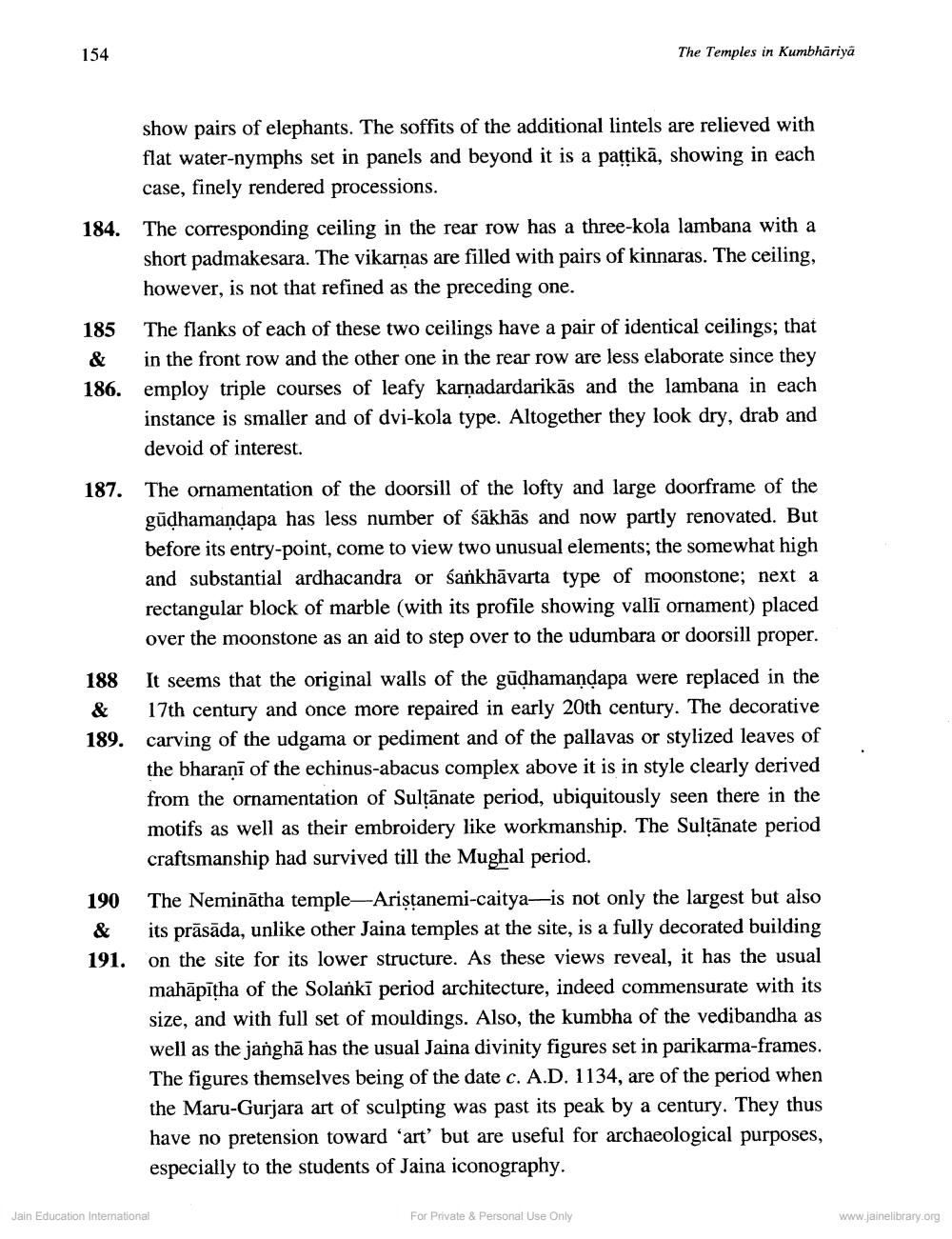________________
154
The Temples in Kumbhāriya
show pairs of elephants. The soffits of the additional lintels are relieved with flat water-nymphs set in panels and beyond it is a pattikā, showing in each case, finely rendered processions.
184.
The corresponding ceiling in the rear row has a three-kola lambana with a short padmakesara. The vikarņas are filled with pairs of kinnaras. The ceiling, however, is not that refined as the preceding one.
185 The flanks of each of these two ceilings have a pair of identical ceilings; that
in the front row and the other one in the rear row are less elaborate since they 186. employ triple courses of leafy karnadardarikās and the lambana in each
instance is smaller and of dvi-kola type. Altogether they look dry, drab and
devoid of interest. 187. The ornamentation of the doorsill of the lofty and large doorframe of the
gūdhamandapa has less number of sākhās and now partly renovated. But before its entry-point, come to view two unusual elements; the somewhat high and substantial ardhacandra or sankhāvarta type of moonstone; next a rectangular block of marble (with its profile showing valli ornament) placed
over the moonstone as an aid to step over to the udumbara or doorsill proper. 188 It seems that the original walls of the gūdhamandapa were replaced in the
& 17th century and once more repaired in early 20th century. The decorative 189. carving of the udgama or pediment and of the pallavas or stylized leaves of
the bharaṇī of the echinus-abacus complex above it is in style clearly derived from the ornamentation of Sultānate period, ubiquitously seen there in the motifs as well as their embroidery like workmanship. The Sultanate period craftsmanship had survived till the Mughal period.
190 &
The Neminātha temple-Aristanemi-caitya—is not only the largest but also its prāsāda, unlike other Jaina temples at the site, is a fully decorated building on the site for its lower structure. As these views reveal, it has the usual mahāpītha of the Solanki period architecture, indeed commensurate with its size, and with full set of mouldings. Also, the kumbha of the vedibandha as well as the janghā has the usual Jaina divinity figures set in parikarma-frames. The figures themselves being of the date c. A.D. 1134, are of the period when the Maru-Gurjara art of sculpting was past its peak by a century. They thus have no pretension toward ‘art' but are useful for archaeological purposes, especially to the students of Jaina iconography.
Jain Education International
For Private & Personal Use Only
www.jainelibrary.org




